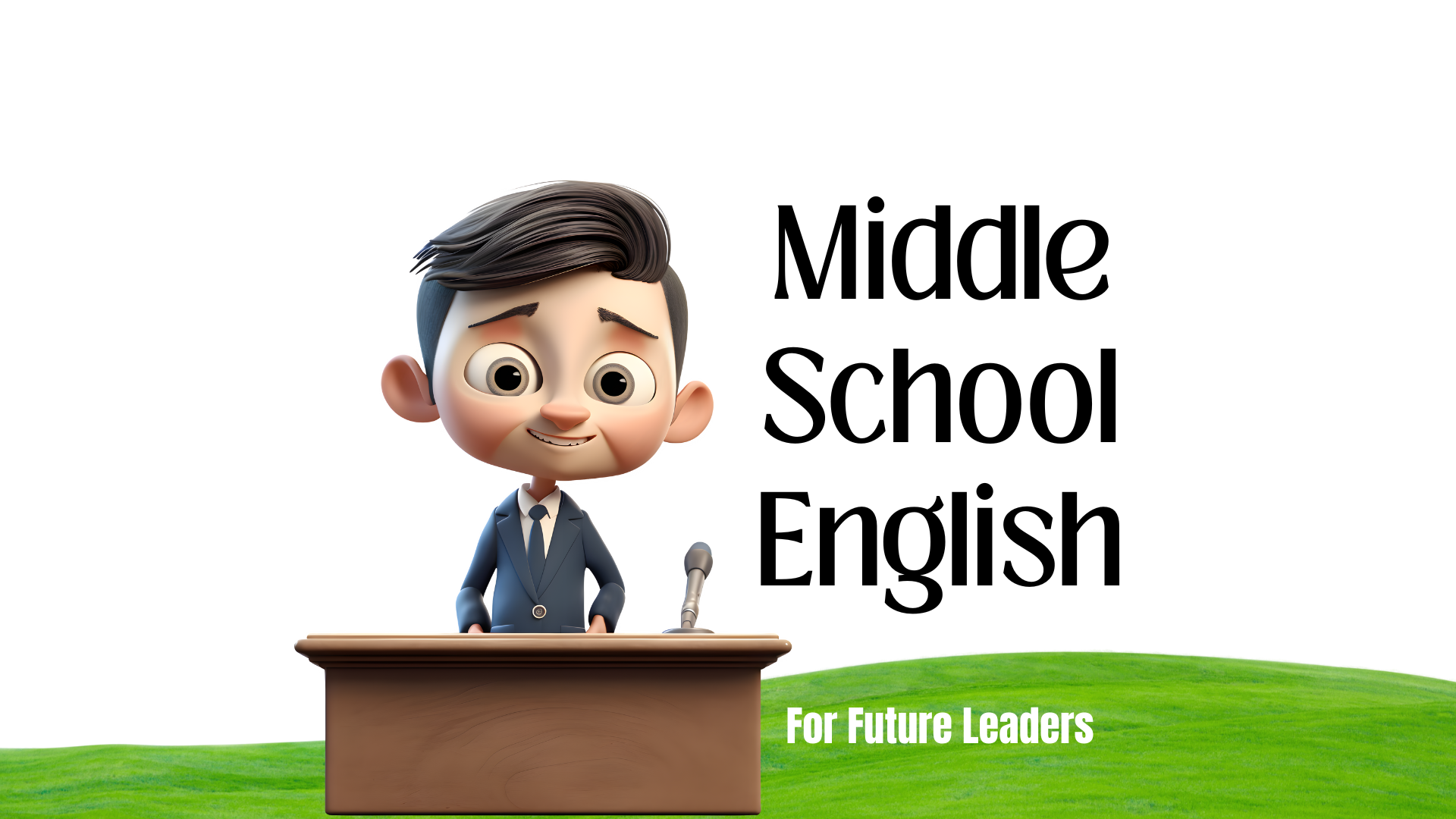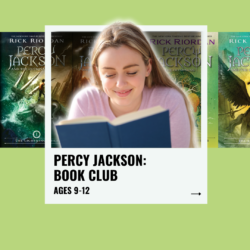Description
This course lays the groundwork for effective communication and critical thinking skills, essential for future leaders. Through a combination of literature, writing, and oral communication activities, students develop a strong foundation in language arts, the bedrock of all other content area studies. Students learn reading, writing, speech, research, and technology skills through explicit, direct instruction, and then they apply their knowledge while creating projects and presenting them to the class. This class is different in that we focus on real-world application of ELA skills and content. We talk about how to give presentations, how to make a good impression while pitching a proposal, and students learn to use 21st century literacy skills to deliver quality work. Students also complete five novels and discuss them in class.
SNAPSHOT OF DAILY ACTIVITIES:
- To create and maintain a friendly environment, we start class by catching up with life.
- We read a portion of scripture (we work our way through the Psalms, Proverbs, or a book of the Bible)
- Prayer–we turn the scripture we just read into a prayer of praise to the Lord. Students also pray for anything else they’d like. We pray for each other as well.
- Students practice a short and sweet grammar/writing mini-lesson
- We have a brief discussion of our class novel.
- The instructor explicitly teaches the day’s concept or skill, which includes modeling. We often have workshop time where students can get things done and ask questions.
- Students complete their projects in class and for homework.
- Some days include student presentations.
SNAPSHOT OF STUDENT OUTPUT:
Students will:
- present 5 major class presentations
- read 5 novels and discuss them in class
- read four short stories
- create an educational cartoon
- create an eBook of poetry, including their original work
- participate in a Poetry Slam
- plan, edit, and produce a video version of a short story
- create a time capsule of the year of their birth
- write informational pieces
- create a digital infographic
- create a podcast
CLASS SYLLABUS:
Week 1-3: Narrative Structure:
Through short stories, students discover various narrative types, learning to analyze their elements and structures. They choose to either participate in their local library story time, where they read and teach the structure of a story or they create their own educational cartoon.
Class Novel: Charlie and the Chocolate Factory by Roald Dahl
- The Coming of Age Narrative & The Character-Problem-Solution Narrative
- The Character-Adventure Narrative & The Hero’s Journey
- Student project & class presentation: Video editing
Week 4-6: Poetry:
Learners study figurative language and poetic devices, then practice identifying their use in multiple pieces of poetry, compiling their own physical or digital poetry magazine, adding original pieces and images, and then participating in a Poetry Slam.
Class Novel: The Crossover by Kwame Alexander
- Extended Metaphor, Alliteration, Assonance, Rhyme
- Personification, Repetition, & Imagery
- Student project & class presentation: eBook
Week 7-8: Visual Storytelling:
Students understand the power of visual storytelling through video creation, curating or creating images and producing them in a visual story.
Class Novel: New Kid by Jerry Craft
- Students convert a short story to a digital, visual story.
- video planning and editing with photos “Ken Burns style” and class presentation
Week 9-11: Literary Time Capsule Project:
In a research project, students explore the literature, music, art, and historical events of their birth year and place, creating a time capsule representing this time.
Class Novel: Moon Over Manifest by Clare Vanderpool
- research & reading for information
- curating items for the time capsule
- Student project & class presentation: informational writing in the form of a digital infographic
Week 12-13: Oral Storytelling Podcast:
Students explore the art of oral storytelling, bringing narratives to life through spoken word. They produce a podcast episode featuring an oral storytelling adaptation.
Class Novel: Because of Winn Dixie by Kate DiCamillo
- voice recording & adapting a visual story to an oral project
- Student project & class presentation: podcast
The Way We Roll:
Student Motivation & Accountability–Learners participate in interactive lessons during their homework time, which includes quizzes on their reading. We use “workshop time” in class so students will write while the teacher “visits” them on their Google Document. Once we started using this method, we saw nearly a 100% completion rate in student writing! We implement other measures to hold them accountable for their learning, like asking them to verbally give answers if they stop using the chatbox, or telling them to send an “IDK yet” (I don’t know yet) in the chatbox if they can’t yet answer a question. We want to honor the investment parents make in this class and the time students spend. The goal is to build skills and learn! That means students are working, thinking, and writing. Active engagement is the key to success in this class.
Public Speaking & Cameras–The instructor intentionally teaches communication skills and norms. For example, the “dominator” will learn to give others a chance to speak and will even learn to involve others to help bring forth their ideas. The quieter students learn to take risks and put themselves out there because they have good ideas and important things to say. These skills are taught through various methods, including speeches, presentations, and Socratic seminars, which often become the favorite for students. We also talk about how an online community is established, and students keep their cameras on. This helps all students feel connected to each other as a community of learners. It also helps the teacher picture their faces when reading their writing. They naturally get more attention from their teacher when their camera is on because the teacher’s eyes are drawn to faces, not empty black boxes. In fact, students who don’t have their cameras on are sorted last in the list of students and sometimes, Zoom even hides them! Keeping the camera on is a learning strategy and improves engagement. Also, we feel closer to each other when we see each other. Trust us. ?
Student Mastery–Each class includes explicit, direct instruction with teacher modeling. Students are guided toward mastery of multiple writing skills and understandings so that they grasp the concepts and become independent. Students are held to a high standard of academic writing, including the use of grammar and the construction of sophisticated sentences.
Teacher Feedback–The back-and-forth work between a student and teacher significantly benefits a student if it is done well. We follow best practices in this area with how we design class time, assignments, and routines. According to Pennington Publishing, effective writing feedback (or grading) is:
• Specific, not general
• Immediate, not postponed
• Routine with a revision / feedback cycle
• Explanatory
• The right amount
• Targeted to the most critical issues
• Varied (written, audio, and video comments)
• Holding students accountable
PRE-REQUISITES:
Students should know how to use Google products and be able to tackle extensive technology tools with perseverance as they learn new tools. If students need to develop a foundation of technology tools, they should take this class first: SmartStart ELA: Tech Powered Learners Ready for Middle School
The other semesters of the Middle School Language Arts series of classes are not prerequisites, and these middle school semesters can be taken “out of order.” Still, students should have a solid foundation in reading and writing before taking this class. They should be able to sustain longer periods of independent reading, not losing comprehension of an seventh-grade text. If students still need the learn the essentials of essay writing, you can take one of the following:
Foundations of Essay Writing a five-week class
or the Self-paced (no live meetings) class called Essay Essentials
Get to know Mrs. Lemons and the Lemons-Aid Team a little more.






Reviews
There are no reviews yet.